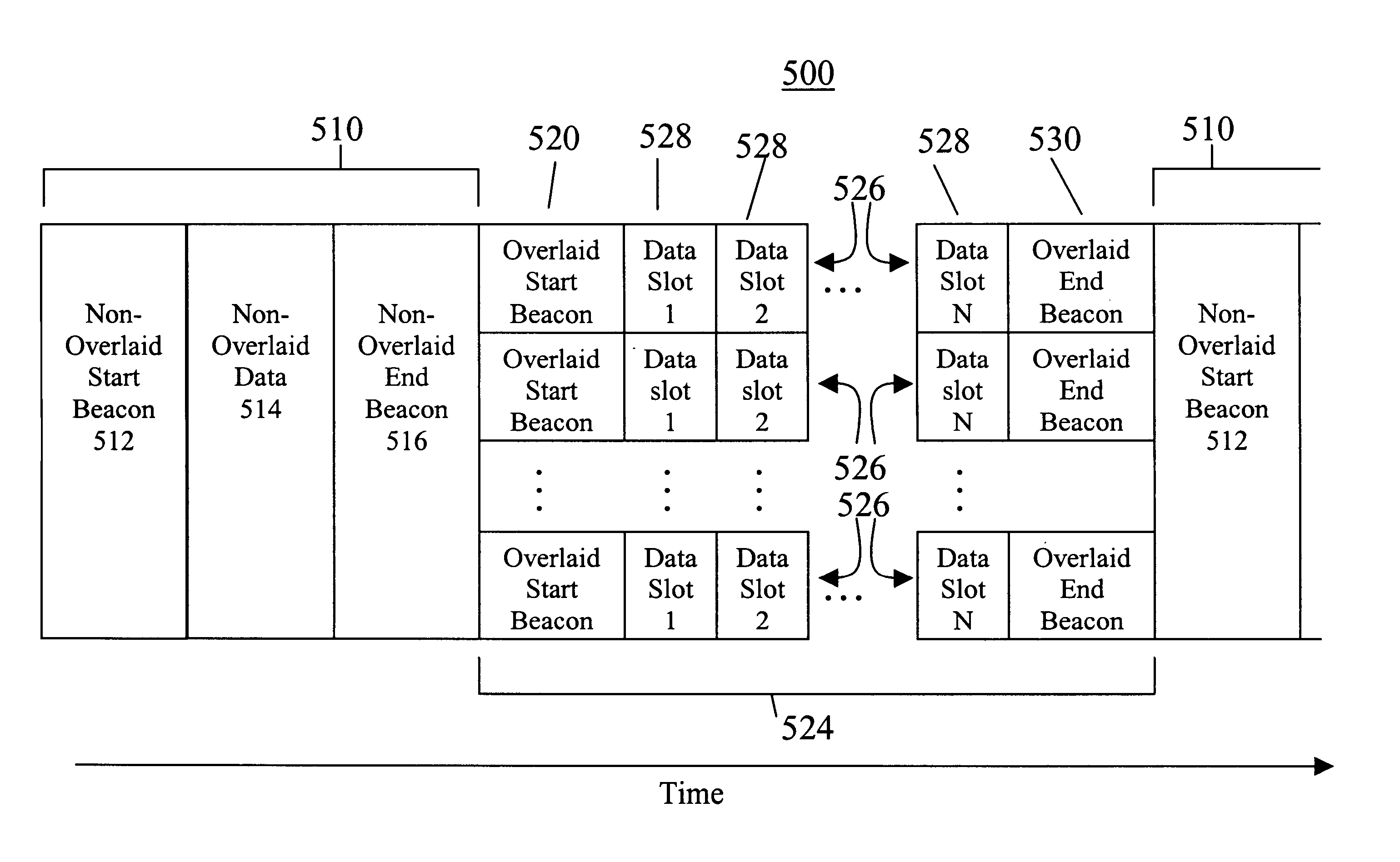Methods for controlling shared access to wireless transmission systems and increasing throughput of the same
a wireless transmission system and wireless network technology, applied in the field of communication systems and networks, can solve the problems of not being able to simultaneously send and receive, reducing the total available bandwidth by half, and not being able to optimize isochronous traffic,
- Summary
- Abstract
- Description
- Claims
- Application Information
AI Technical Summary
Benefits of technology
Problems solved by technology
Method used
Image
Examples
Embodiment Construction
The overlaid communication system described above may be used as part of an integrated overlaid / non-overlaid "super frame" communication system. FIG. 1 charts a communication segment 500 in this embodiment which is preferably implemented using a microprocessor or similar controller in each communicating unit and begins with a non-overlaid communication period 510 commencing with a non-overlaid communication start beacon 512. This is an information segment signaled by a coordinator node (a base station, a node that has been elected or volunteered to perform system coordination functions, or a number of nodes among which the coordination function is handed in an ad hoc network where there is no established infrastructure such as an established base station) over all available carriers; alternatively, for robustness and distributed ad hoc operation the duty of sending the non-overlaid start beacon 512 may be shared amongst the nodes. In this case there would not be one fixed permanent ...
PUM
 Login to View More
Login to View More Abstract
Description
Claims
Application Information
 Login to View More
Login to View More - R&D
- Intellectual Property
- Life Sciences
- Materials
- Tech Scout
- Unparalleled Data Quality
- Higher Quality Content
- 60% Fewer Hallucinations
Browse by: Latest US Patents, China's latest patents, Technical Efficacy Thesaurus, Application Domain, Technology Topic, Popular Technical Reports.
© 2025 PatSnap. All rights reserved.Legal|Privacy policy|Modern Slavery Act Transparency Statement|Sitemap|About US| Contact US: help@patsnap.com


